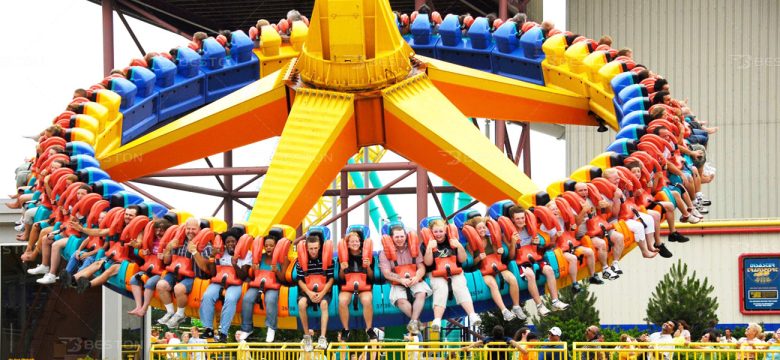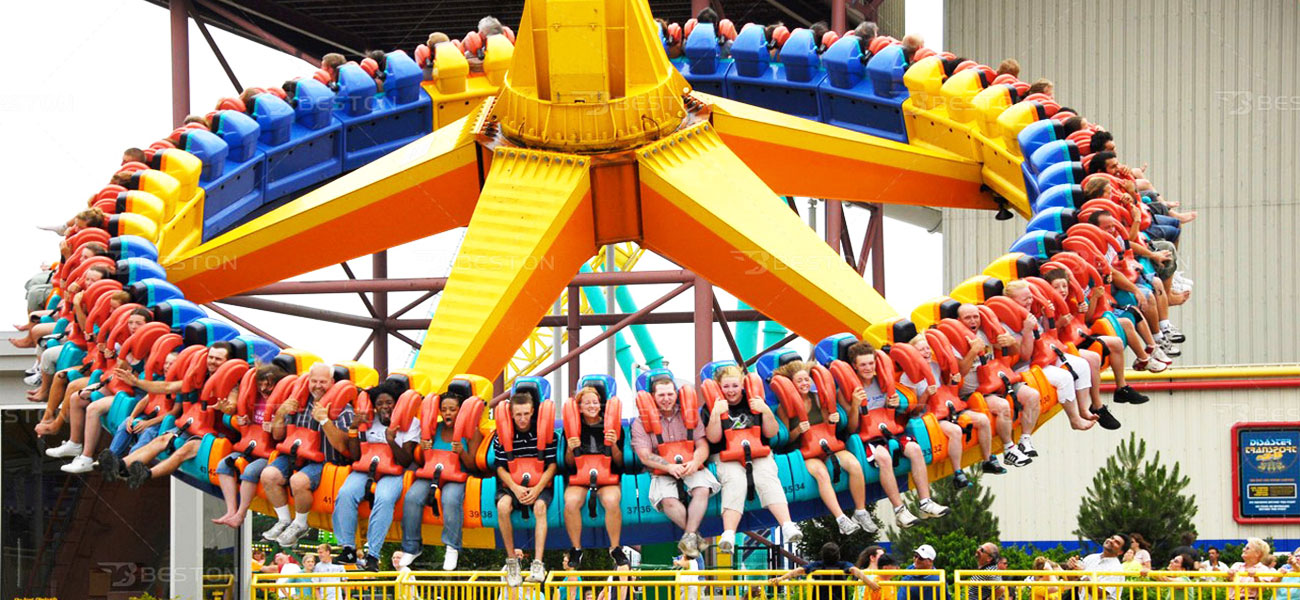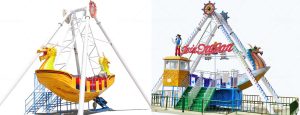Among the most captivating thrill rides in the amusement park industry, pendulum rides continue to grow in popularity. These attractions stand out not just for their motion but for the science that powers their swings. Unlike a roller coaster or Ferris wheel, which offer linear or circular movements, a pendulum ride delivers pure oscillation — the kind that accelerates quickly and creates intense g-force sensations. Understanding how these rides operate gives better insight into their appeal, and helps park owners make informed investment decisions.
Core Motion: Swinging With Precision and Force
The fundamental movement of a pendulum ride (аттракцион маятник) is back-and-forth, similar to a grandfather clock or a simple playground swing. However, the scale, force, and control in a commercial ride are far more complex. Mounted on a steel frame, the gondola is suspended from an arm that pivots around a central axle. As electric motors or hydraulic systems apply torque, the arm begins swinging. With each swing, momentum builds — reaching higher angles and faster speeds until the ride reaches its programmed limits or completes a full 360-degree rotation in advanced versions.
Gaining Kinetic Energy
At the heart of a pendulum ride’s thrilling sensation is its kinetic energy. Starting from rest, the ride gains energy through motorized propulsion and gravity. The low point of the swing is where velocity is highest, and as the gondola rises, that speed converts into height. Riders experience increasing pressure at the lowest point and a sense of weightlessness at the peak — a contrast that keeps adrenaline high.
Ride Structure and Mechanical Components Explained
A quality pendulum ride is a feat of modern engineering. Most large-scale units feature a steel framework designed to support dynamic loads from passengers and swinging mass. The arm is usually a hollow steel beam, chosen for strength and weight efficiency. At the end of the arm is a rotating gondola or platform, which holds riders securely. These seats often rotate slowly or remain fixed, depending on the ride style. Passenger harnesses, over-the-shoulder restraints, and anti-rollback systems ensure safety at all stages of motion.
Balancing Speed and Stability
Advanced control systems govern acceleration and deceleration. Ride operators can adjust swing angles, rotational speed, and swing duration through pre-programmed settings. This helps the park calibrate thrill levels for specific audiences — such as a toned-down version for families, or full-throttle swings for thrill seekers. These control systems are designed with multiple redundancies, making pendulum rides among the safest large-scale attractions.
Comparison With Other Iconic Rides
Pendulum rides serve a unique niche between spinning rides and drop attractions. Unlike a Ferris wheel, which provides a slow, scenic view from above, pendulum rides create intense, short bursts of excitement. And while roller coasters (американские горки) offer a continuous journey across a track, pendulum rides focus on repetitive motion that maximizes airtime and g-force within a compact footprint.
Complementing Park Layouts
Because pendulum rides have a small ground base but large visual height, they act as excellent visual anchors within a park. They draw attention just like a Ferris wheel (аттракцион колесо обозрения) but offer thrills closer to those of a high-speed coaster. Parks often place them in areas that need dynamic energy to balance slow rides or family zones.
Target Audience and Rider Appeal
Pendulum rides appeal to a broad demographic. Teenagers and young adults seek out the high-speed swings and fear-defying heights, while families enjoy the mid-size variants that offer milder thrills. By offering variants with different seat configurations — like inward-facing or outward-facing seats — manufacturers cater to diverse psychological experiences, making the ride more versatile than a one-size-fits-all thrill machine.
Psychological Impact of the Motion
The sensation of acceleration, followed by a momentary pause at the peak of each swing, creates a powerful emotional response. Riders scream, laugh, or clutch their harnesses — all indicators of an effective thrill experience. This ride structure triggers a release of endorphins, which is why many people return for repeat rides, similar to their habits with a favorite roller coaster.
Maintenance and Durability Considerations
Although pendulum rides involve fewer moving parts than coasters, they still require regular inspection. Bearings, motors, hydraulic arms, and the gondola’s rotating mechanisms must all be maintained to ensure long-term durability. High-quality rides are made with corrosion-resistant coatings and weatherproof electronics, making them suitable for both indoor installations and outdoor use.
Operational Efficiency for Park Owners
High rider capacity and relatively short cycle times make pendulum rides efficient revenue generators. They require minimal staff, have fast load-unload cycles, and attract large queues throughout the day — much like a Ferris wheel in tourist-heavy locations. Properly maintained, these rides offer long service lives and low downtime, giving investors confidence in their ROI.
Conclusion: A Must-Have for Modern Parks
Pendulum rides combine scientific precision with sheer exhilaration. Their unique motion profile, compact footprint, and broad audience appeal place them alongside roller coasters and Ferris wheels as essential elements of any well-rounded amusement park. Whether you’re upgrading an existing layout or developing a new entertainment zone, incorporating a pendulum ride ensures your attraction mix includes both visual spectacle and unforgettable thrills.



